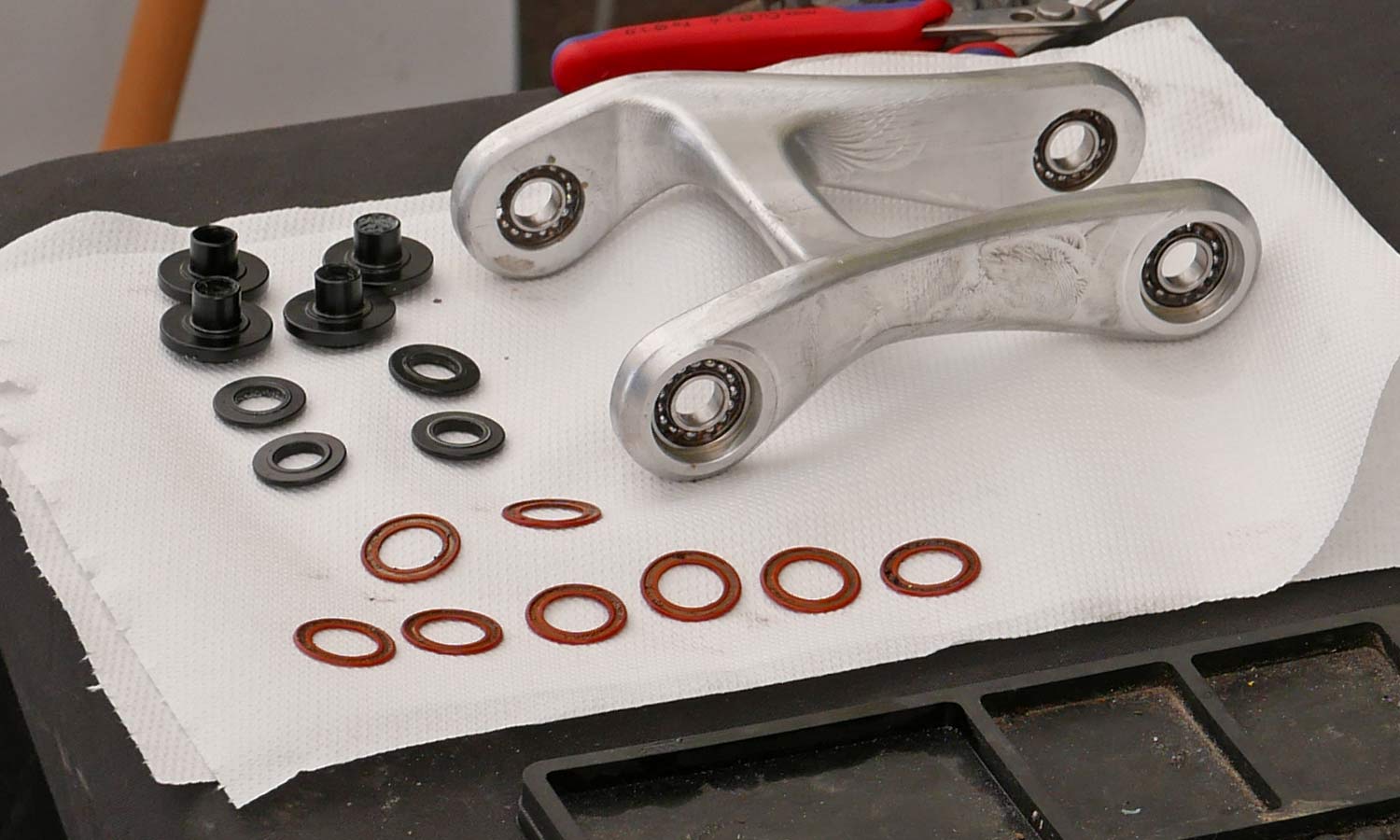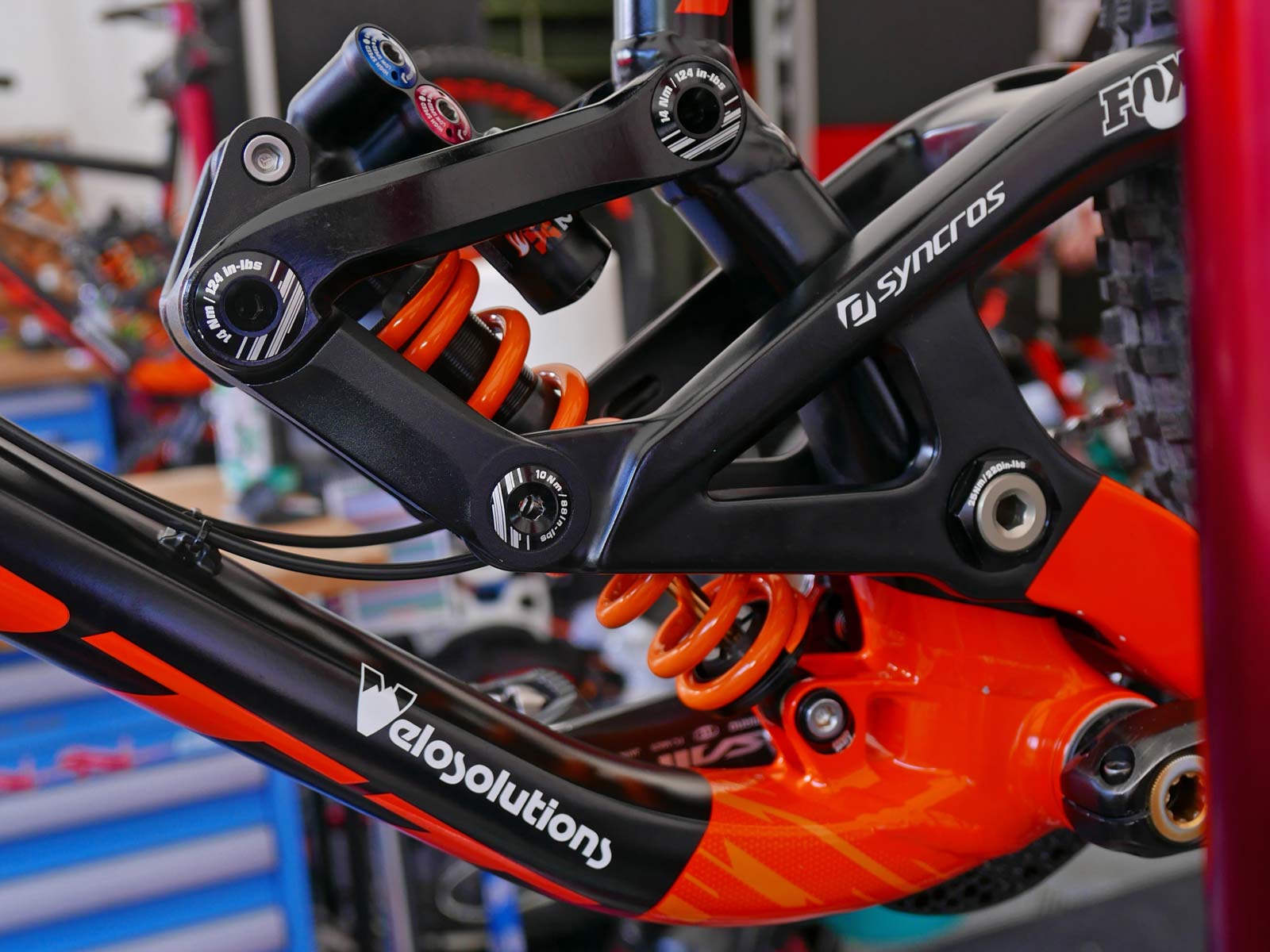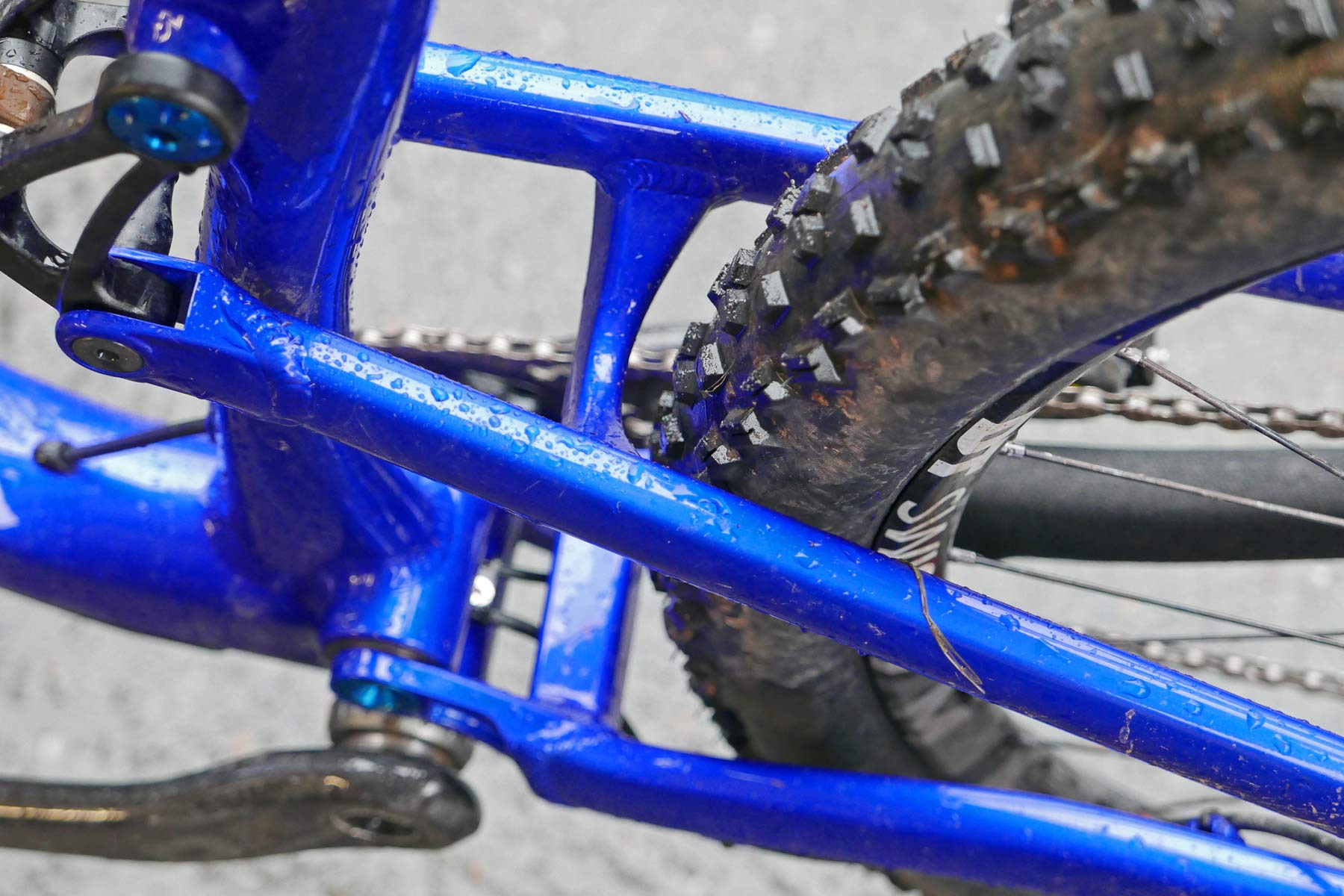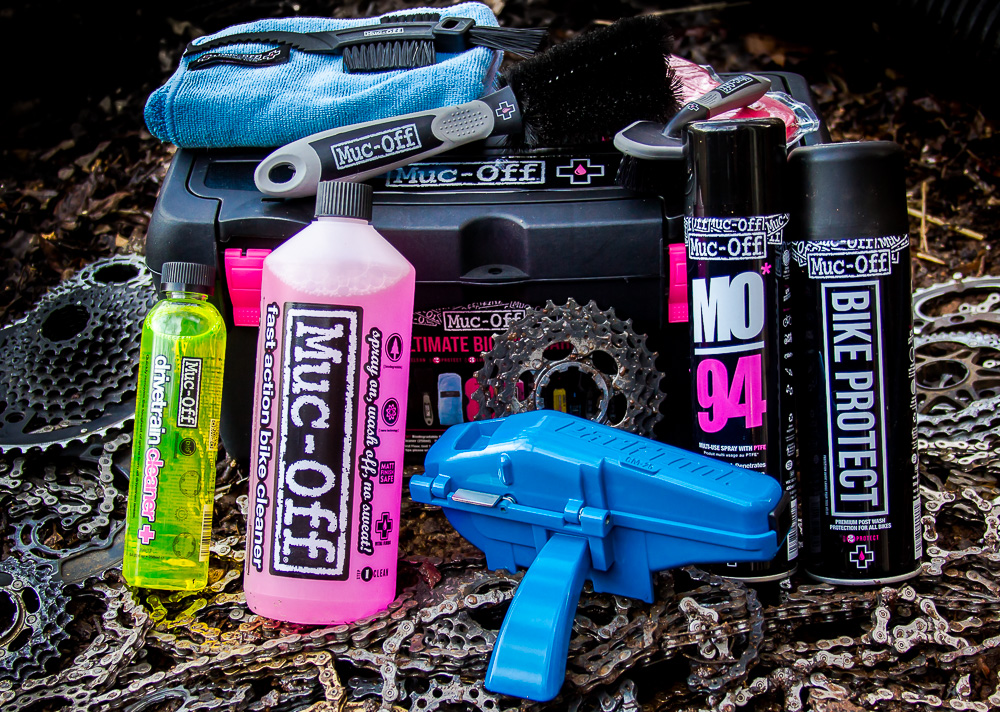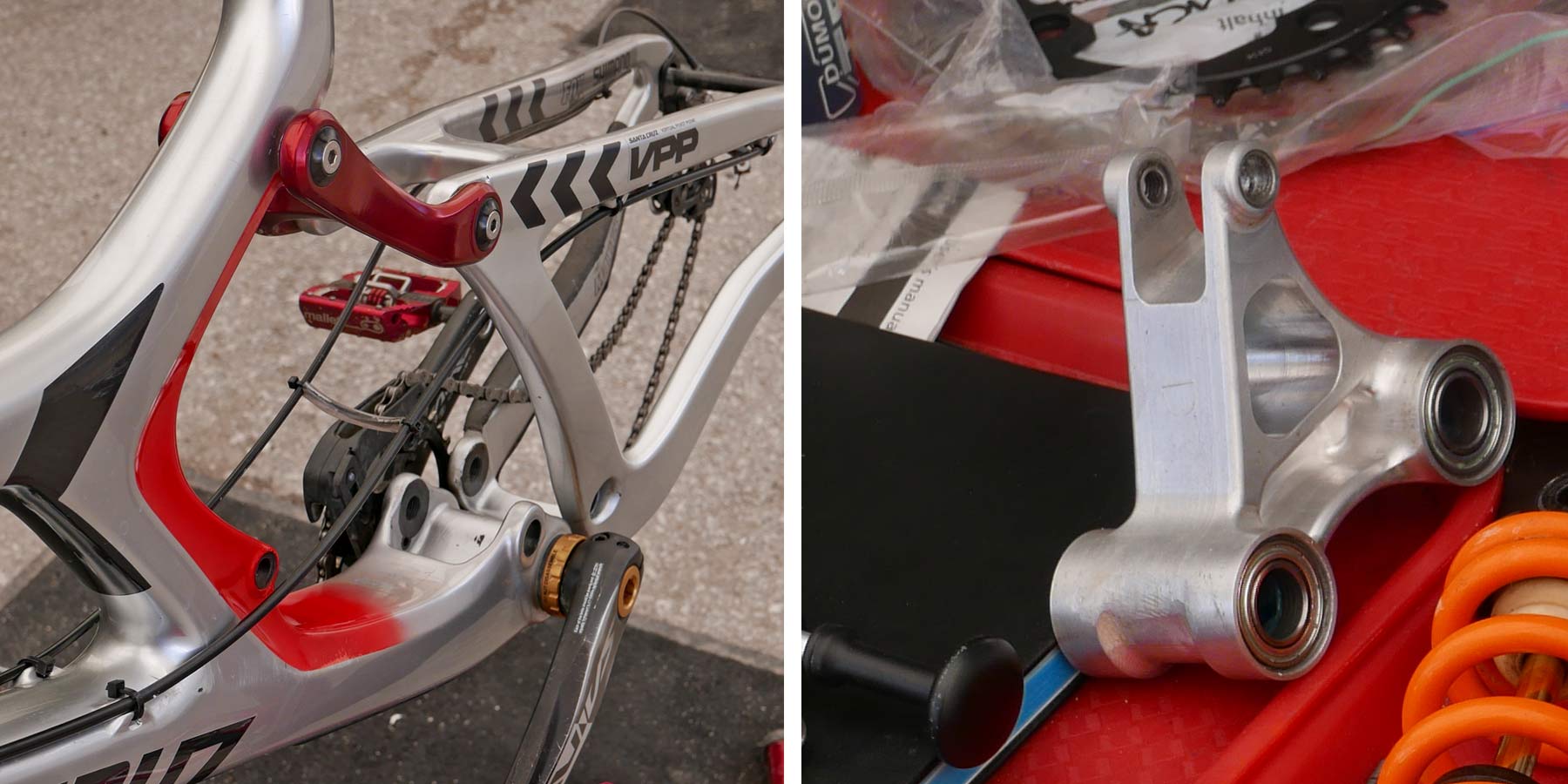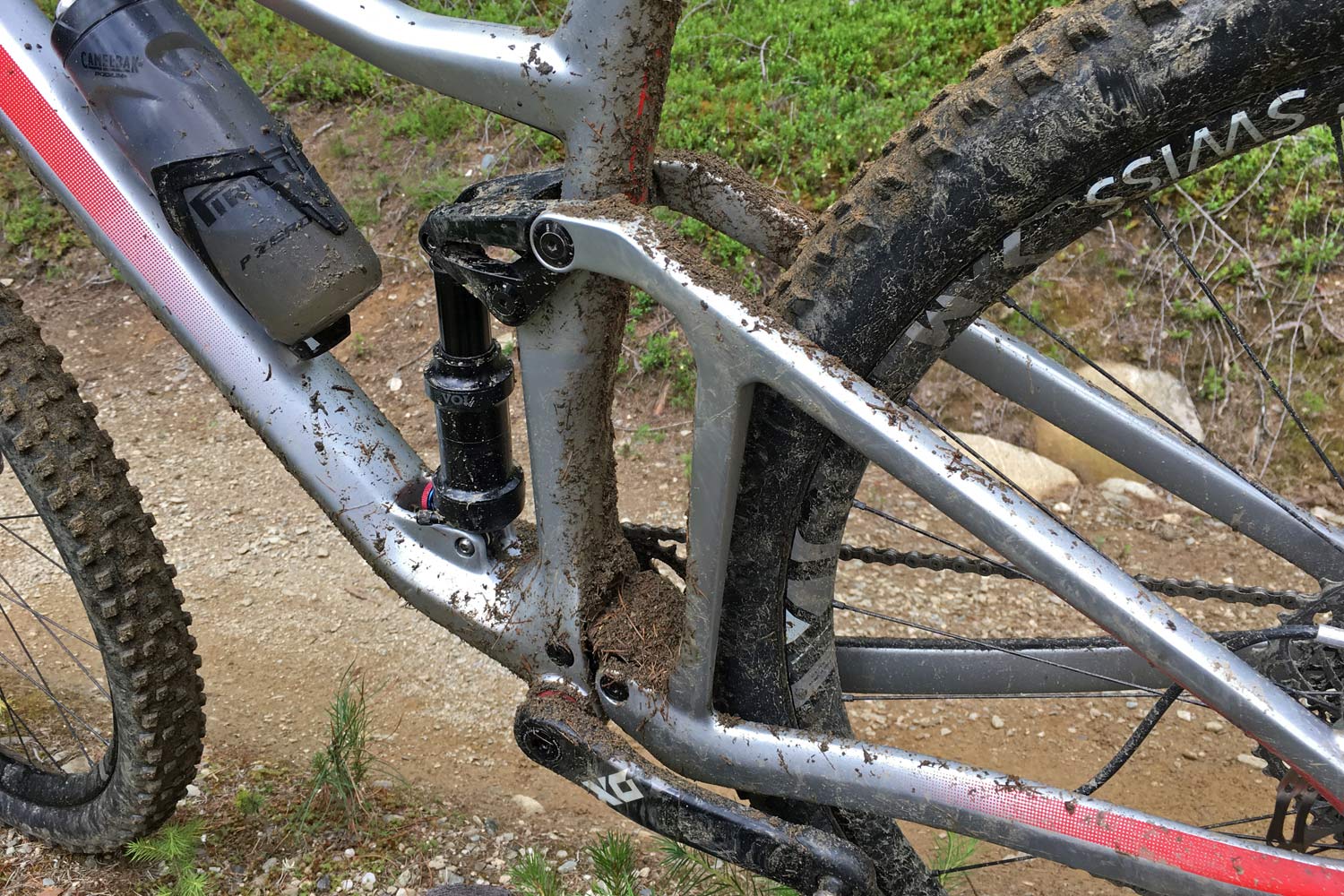Last week we broke down how full-suspension mountain bike frames pivot and flex to move through their travel, most often through rotating bushings & bearings. All of those moving parts require varying degrees of attention and maintenance to keep pivoting smoothly. Without slipping into how to maintain shocks & sliders, let’s look at how we need to clean, inspect, and lubricate frame pivots to get the most out of a full-suspension bike’s rear wheel travel.
How to determine if your pivots needs attention?
It is pretty simple to check to see that your suspension is working properly. Cycle the suspension through its travel (by pushing down on the saddle) to detect any friction, and attempt to twist the rear end (by holding the seatpost and twisting the rear wheel side-to-side) to identify any significant wear. If you can feel a lot of friction, any notching in the movement, or lateral play in the pivots it is time to dig deeper to address the problem.
You should regularly just give everything a quick look over, to see if you can see any evidence of contamination. Dirt or grime on the outside of your pivots should be wiped off with a clean rag. But any time you see what looks like moisture, oil, or grease leading out of the pivots may be a sign of some contamination inside.
Of course you should always feel free to break out the torque wrench and check that all the pivots are tightened to spec as well. And if you notice any creaking or irregular noise while riding, suspension pivots are one of the first places to look deeper.
What most affects suspension pivot smoothness?
The biggest enemy to the life of suspension bushings is water carrying in dirt & grit that then gets between the two large surfaces sliding against each other. That creates friction, and will prematurely wearing the bushing surfaces. Dry dirt and sand can also find its way into the bushings too.
Water is again the biggest enemy to bearings. More so because water both carries in the same dirt & grit that will contaminate the bearings’ grease, but also because it washes out the grease that is needed for continued lubrication of the bearings and protecting against corrosion.
So how do you ride your bike and prevent pivot contamination?
The pivots on your bike are all designed with some sealing that is generally effective at keeping mud and grit out of bushings and bearings. That means you can keep riding your bike without worrying about it getting touched by water or dirt. But, if the bike gets fully submerged or ridden extensively in a lot of water, you are going to have to service all of its moving parts sooner rather than later.
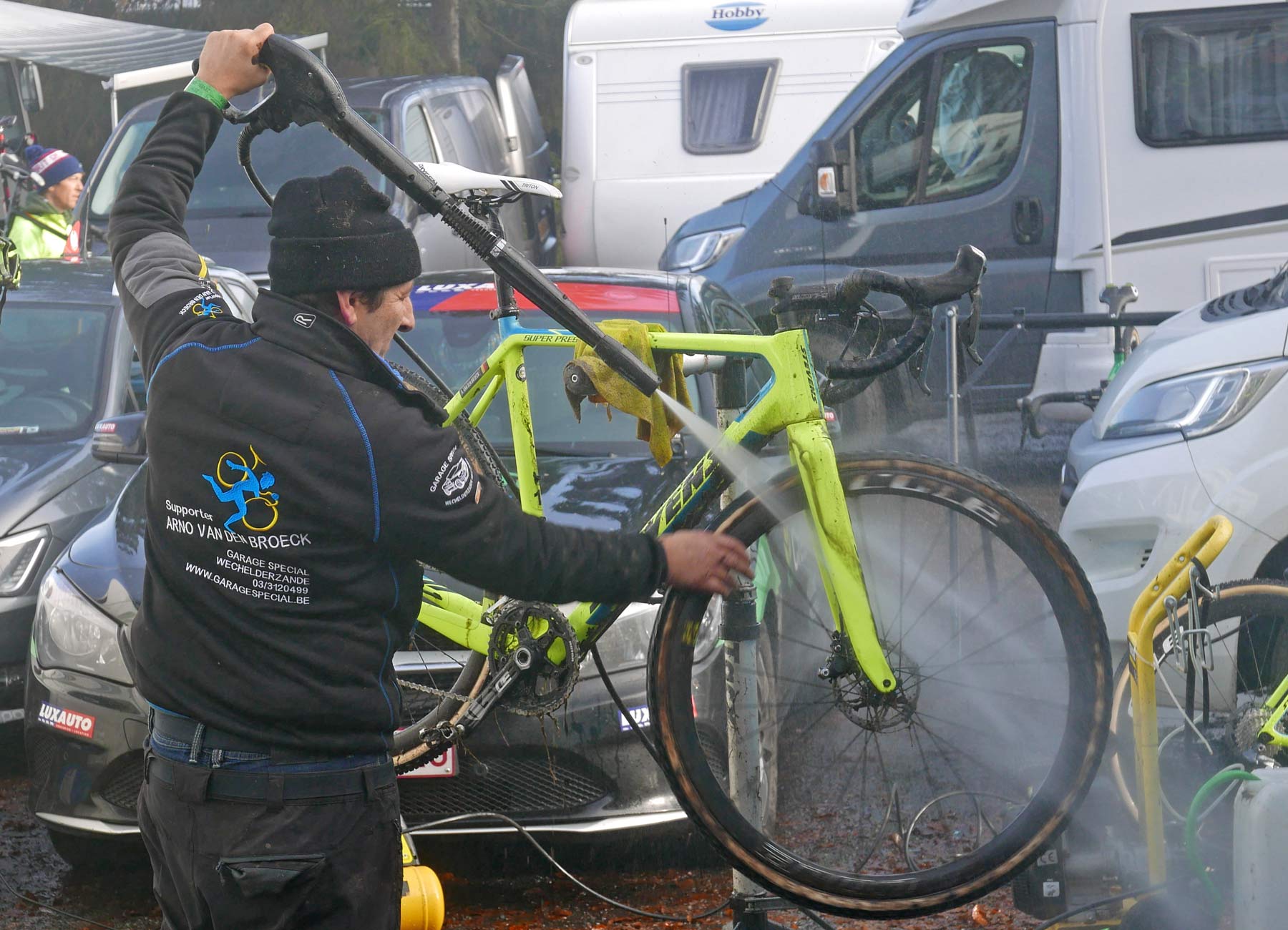
It is a good idea to keep your bike clean & dry, especially when you are not riding it. But as you have probably heard, washing it can be trouble too. The rule is always to wash your bike as much as possible without spraying water directly at any pivot, bushing, or bearing. Pressure washing is definitely a bad idea. While many people will say that lots of people (and especially pro cyclocross mechanics) pressure wash bikes, it is important to remember that and pressurized water stream hitting a bushing or bearing seal will both carry dirt past any seals into the moving part AND wash away any lubrication inside.
It is OK to pressure wash your bike ONLY if you know that you will almost immediately need to relubricate any moving part that gets hit by the water. Keep in mind that pressurized air will cause much of the same problems.
So stick to cleaning your bike gently, and only with bike-specific cleaners & chemicals. Don’t spray pivots directly with water. Then lube the moving parts regularly as your bike maker suggests. But don’t leave extra grease or lube residue at the pivots because it will just catch dirt & dust from the trail.
How do you service bushings?
Most bushings are pretty low maintenance and will last years with some simple cleaning and greasing. IGUS bushings for example just need to have their outer surfaces greased as they are installed. When you clean around bushings, they typically just need to be wiped clean, dry & again lightly regreased.
If you see that your bushings have grooves worn into them or have developed play/slop, they will need to be replaced. Bushing removal and replacement tends to be quite simple, since they are usually just an easy friction fit and don’t require special tools. Simply tap the old ones out, push a replacement bushing in, and grease them with the recommended lubricant.
How do you service bearings?
Bearings are also pretty low maintenance as long as they don’t get water in them that contaminates their grease. But even then almost all suspension bearings on a bike tend to be serviceable, with a bit more time and effort.
Most have seals that can typically be carefully popped off with a small sharp tool, paying special attention not to bend the seal as it comes off as that will both add friction and limit the ability to keep contaminants out.
Once you can see the balls inside, if the grease is contaminated, you need to use a degreaser to remove all of the dirty grease. Then let the degreaser solvent dry, and pack the bearings with new waterproof grease, as you spin the bearing to spread the grease all around the balls. There are tons of different cycling specific grease options. I tend to use something like Park PolyLube or Phil Wood Waterproof Grease. Once that is in, carefully press the bearing seal back into place, lightly grease the outside of the seals, and you are good to ride again.
For the most part here, we are talking about cleaning & regreasing bearings while they are still installed in the bike.
If you clean & repack your bearings and they still are notched after re-greasing, they will probably just need to be replaced. Bearings need special tools to remove them from your frame and again to replace them. Only replace the bearings yourself if you have the proper tools, have read the manufacturer instructions, and are an experienced mechanic. While most are press fit, some even require something like Loctite to secure them in place. Improper removal or installation can easily damage a frame, and make your bike unridable.
How do you prevent pivot wear in the first place?
Regularly keeping an eye on your bike’s pivots makes their maintenance easy. That doesn’t mean taking everything apart, cleaning, and regreasing after every ride. But routinely wiping dirt & mud off the outside of your suspension when you get home is a great first step. One, it keeps the dirt from accumulating; and two, you’ll often notice any other issues the bike might develop before they become a bigger problem.
When you get back from an especially wet or muddy ride, it is always a good idea to spend a couple extra minutes wiping the mud away from the pivots, drying the moving parts, and regreasing seals as needed.
It depends a lot in what conditions you ride, and how well & often you clean your bike. Pretty much every bike maker publishes some maintenance schedule that says something like “Inspect bearings, replace worn or damaged parts every 50 hours in dry conditions, or every 25 hours in wet, muddy, or sandy conditions.” But a lot of the time it is going to come down to you keeping a close eye on your bike, and how you take care of its moving parts.
If you don’t let your bike get to the point where you feel excess friction or slop in the pivots, all you will probably need to do is clean off and relubricate the pivots. When you let it get past that, you’ll often end up needing to replace bushings and bearings.
The fun never ends. Stay tuned for a new post each week that explores one small suspension tech, tuning or product topic. Check out past posts here. Got a question you want answered? Email us. Want your brand or product featured? We can do that too.
